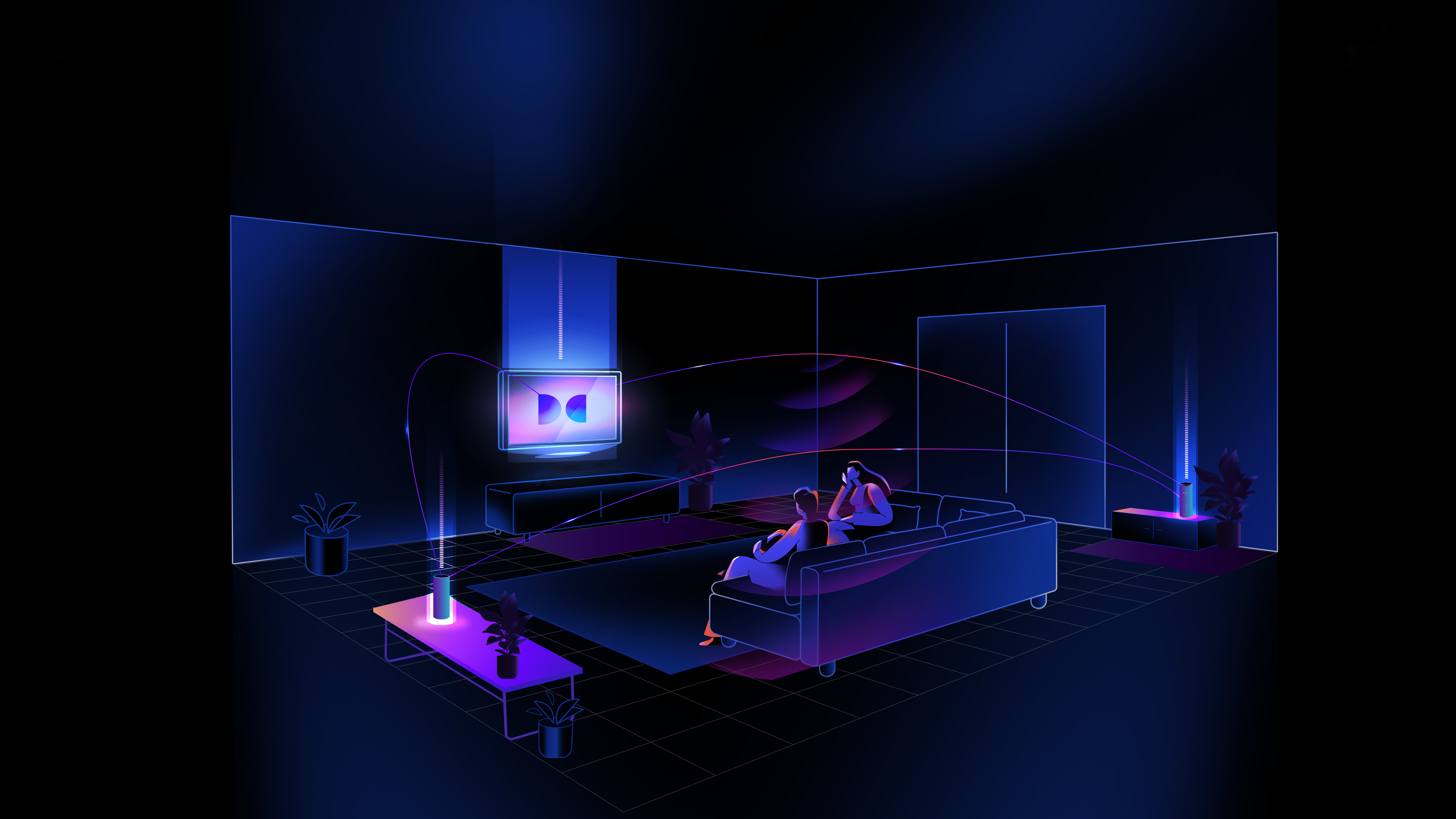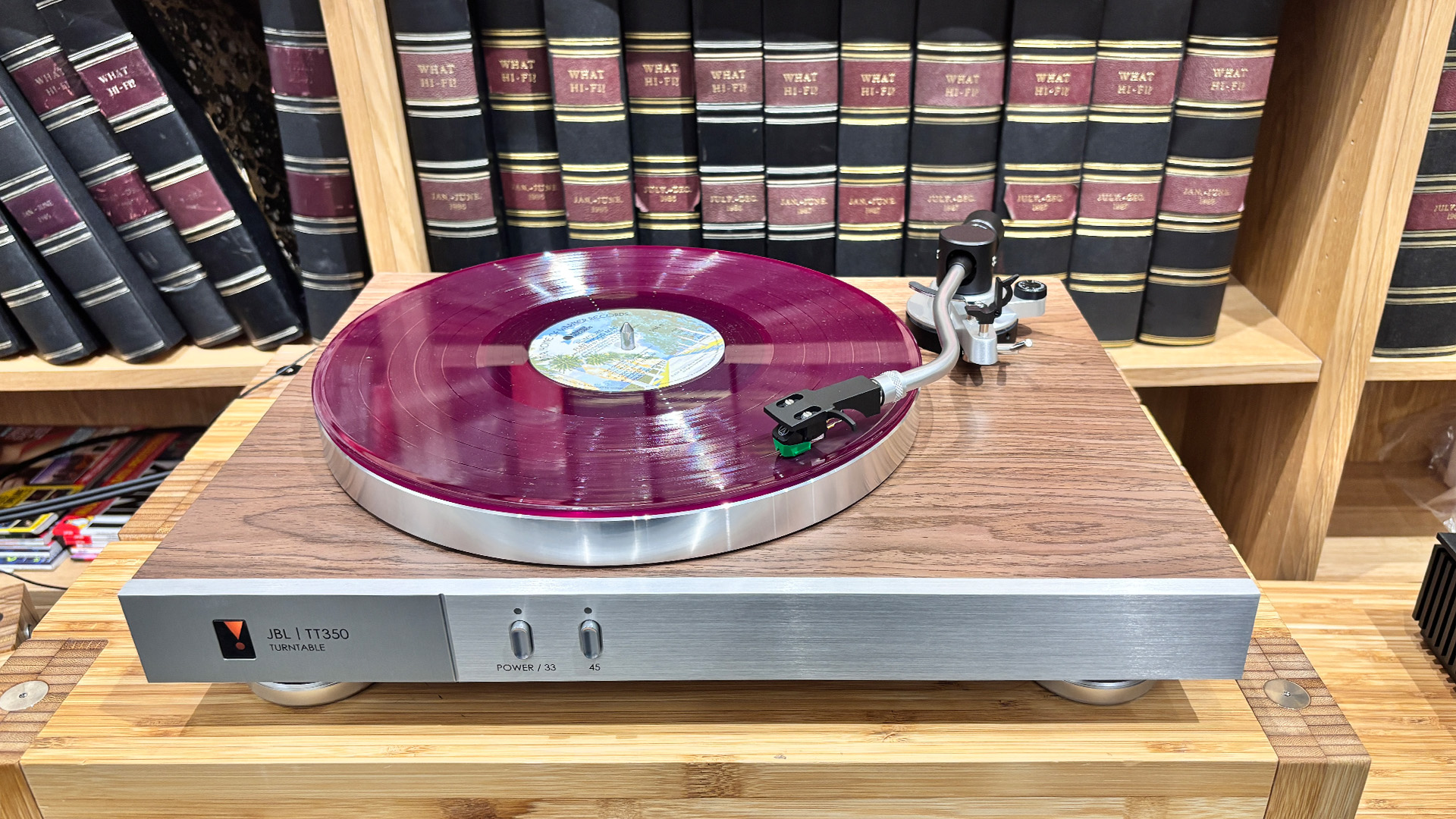Dolby’s new Atmos tech wants to fix our biggest issue with TVs – but we have questions
Can TV speakers ever truly compete with a dedicated system or solid soundbar?

Last week Dolby unveiled new FlexConnect tech that it promises will let TV fans quickly and easily create wireless Atmos surround sound set-ups without the need for a soundbar or ceiling speakers. And on the one hand that’s very exciting.
The reason for that’s simple; Dolby Atmos is awesome when it’s done right. To this day I still remember the first time I got to hear it going to a press screening of Pixar’s Brave many moons ago. Listening to the precise positioning of the sound as it fired from around the room, the experience was breathtaking and gave the movie a level of immersion I’d simply not experienced with traditional surround-sound systems.
Since then I’ve been hooked, to the point I’ve had heated arguments with some colleagues about whether I’d rather give up Atmos or HDR watching some movies. In my mind you’ve not properly experienced The Batman or Nope until you’ve heard them with Atmos. Jump over to our best Dolby Atmos movie scenes to test your home system and you’ll get an idea why.
In fact, the only downside to this goes back to what I said earlier about, “when done right”. Look at our best home theatre speaker systems and best Dolby Atmos soundbar guides and you’ll see the experience you get varies greatly depending on the specific hardware and set-up you use.
Though Atmos soundbars have come a long way, trust me when I say they still don’t match what you’ll get with a proper system with intelligently placed ceiling and front, wide speakers.
The downside is that to get that, you have to do a fair amount of cable management and usually plan your living room around the speakers’ locations – which as I found out after getting married, isn’t something everyone is willing to do.
This is why FlexConnect is at first glance so appealing. It’s being pitched at people in precisely my predicament. Those who can’t plan their living space around an Atmos system, who still want to get “good” surround sound from the comfort of their own home.
Get the What Hi-Fi? Newsletter
The latest hi-fi, home cinema and tech news, reviews, buying advice and deals, direct to your inbox.
I mean, how great would it be if you could just pick up a couple of compatible wireless speakers, plonk them wherever you like in your lounge, click a button or two on your remote or smartphone app, and then bingo bango, have a fully functioning Atmos system?
But, I’m not jumping with joy about FlexConnect just yet for two reasons.
First, because we’ve not actually seen the hardware. Dolby has been tight-lipped about the technical requirements and specific products that will work with FlexConnect. All we know is that TCL will be the first to launch TVs and new speakers with it at an unspecified point in 2024. As I said already, the hardware really matters with Atmos, no amount of clever connectivity and intelligent room scanning will make a flawed speaker system sound good.
The second reason, which is tied to this, is that in its current set-up, that would mean FlexConnect systems would need to overcome one of the most common problems we experience testing TVs – their terrible in-built speaker systems.
If you read any of our recent TV reviews, you’ll know poor audio quality is a key issue, even on the most expensive sets.
Do a quick roll-call for the latest flagships we’ve tested this year and you'll see what I mean. Testing the LG G3 and LG C3, we found both offered below-par detail and experienced a “flappy woofer” issue in Atmos which all but ruined the audio of many movies, like BladeRunner 2049 during our checks. Samsung’s S95B similarly struggled during our checks, with its speakers crackling during particularly bass-heavy scenes.
These are all common issues that, in fairness to manufacturers, are the consequence of TVs' increasingly dinky, thin designs. This is a key reason we always recommend investing in a proper speaker system, or at the very least a soundbar if you care about audio quality.
If FlexConnect systems are going to deliver true Atmos, they’ll have to find a way to deal with this, that doesn’t rely purely on clever processing, at least in my mind.
MORE:
These are the best OLED TVs we’ve tested
Check out our picks of the best soundbars
Want a proper home cinema experience? Check out our best projectors guide

Alastair is What Hi-Fi?’s editor in chief. He has well over a decade’s experience as a journalist working in both B2C and B2B press. During this time he’s covered everything from the launch of the first Amazon Echo to government cyber security policy. Prior to joining What Hi-Fi? he served as Trusted Reviews’ editor-in-chief. Outside of tech, he has a Masters from King’s College London in Ethics and the Philosophy of Religion, is an enthusiastic, but untalented, guitar player and runs a webcomic in his spare time.
